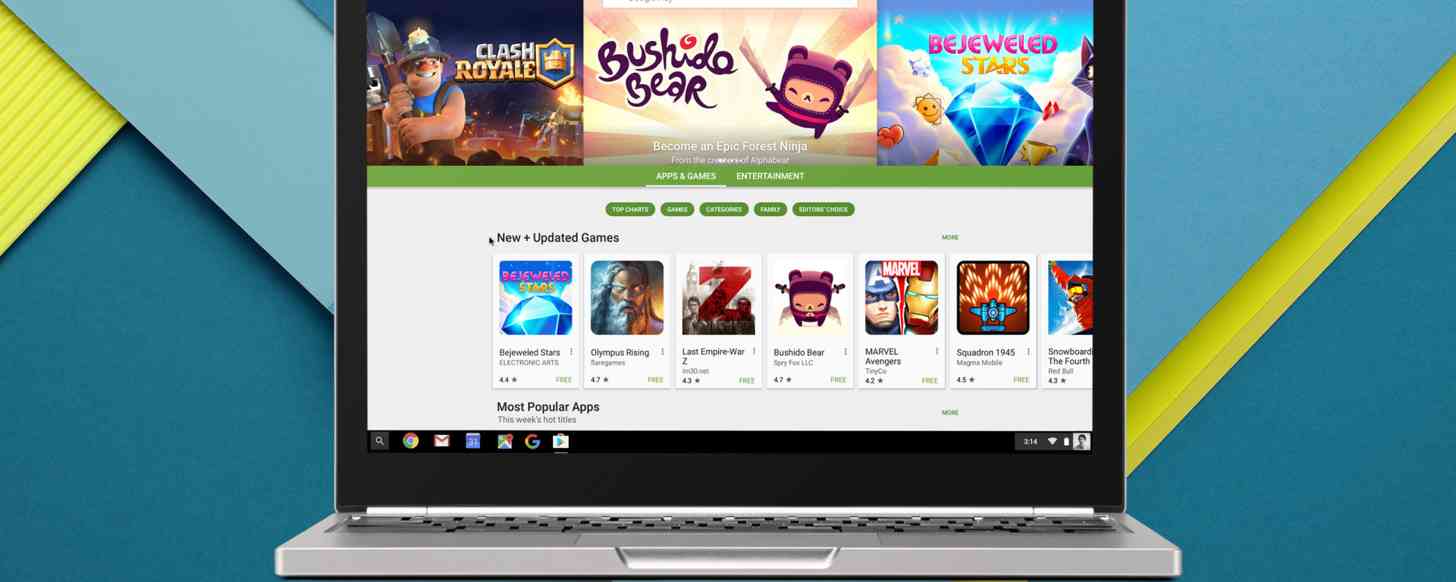
I recently wrote an article talking about how wrong I was about Chromebooks and their perceived usefulness. After purchasing a relatively low-end model, the ASUS C202SA, I quickly came to the conclusion that having an affordable glorified web browser in a traditional laptop form was way more beneficial than I was willing to give it credit for, particularly because a good chunk of my time spent on a computer is through a web browser or word processor anyway.
Despite my opinion shift, I have to admit that I probably never would have become interested in Chromebooks at all if I hadn’t known that many Chromebooks would eventually receive access to Google’s Play store, which has millions of apps. In my head, I thought of this as an excellent addition to Chromebooks. Android apps may not be as feature-heavy or complex as programs on a PC, but they are quite useful when you consider the very limited options that Chromebook users have otherwise.
I had my C202SA for a short time before snagging a deal on a Dell Chromebook 13 from Dell’s Outlet store. The Dell 13 currently has access to the Play store through what is known as the “developer channel” - an unstable channel with early access to features in testing - which was a big draw for me. I had a good experience with the ASUS 202, but it doesn’t have the Play Store added in (yet – the 202 is on the list of Chromebooks that will get the Play store in the future). Curiosity got the better of me, so I switched to the Dell to find out just how useful the Play Store actually was.
I’ve been using my Dell for about 2 weeks now. My experience with the Play store isn't without challenges, as expected, but still much appreciated. A couple of apps that I was excited to use are not yet “supported” by my device, such as Microsoft Office and Steam, but will reportedly be available later once "improvements to the experiences" have been made. Additionally, I find that several games and apps are not compatible with non-touch Chromebooks such as my own – an obvious obstacle I had completely overlooked. Some apps, however, perform just fine. Hearthstone can be installed and played with no issue (aside from occasional lag), as can Final Fantasy III. Gmail, Facebook Messenger, and Evernote are all services that I had no qualms accessing through the web but find that their dedicated apps have a much quicker and smoother response. And while I cannot access Microsoft Office through the Play store, I find G Suite (Google Suite) to be a perfectly acceptable alternative.
Currently, only three Chromebooks officially support the Play Store on the stable (default) channel (Chromebook Pixel 2015; ASUS Flip; Acer R11), but it would appear that the Chrome OS team is working diligently to bring the Play Store to more Chromebooks. If you’re in the market for a Chromebook and you’re wondering if the Play Store adds anything of value to a laptop-like device, I would say that in many aspects it does. Chromebooks with touchscreens will benefit from the Play Store more than non-touchscreen devices will by having fewer restrictions, but non-touchscreen devices still stand to benefit from the addition by having access to apps that may perform better than their web-based alternatives.
Even before I had access to the Play store, my Chromebook quickly became my go-to device for light computer tasks and media consumption. Despite the shortcomings that come with the development of the Play store on Chromebooks right now, it is an overall welcome improvement, which should only get better once it becomes stable and widely available.